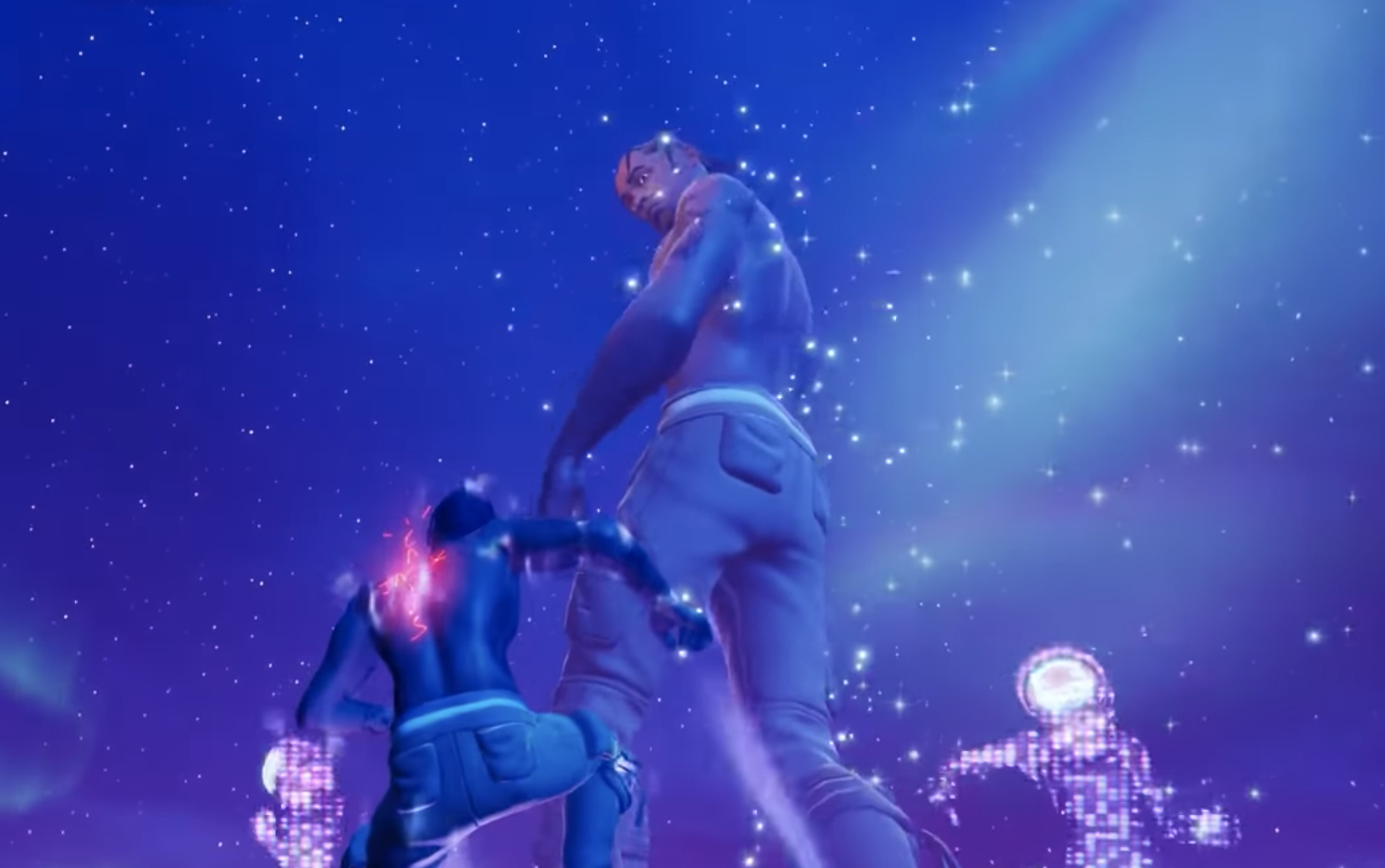

We may earn revenue from the products available on this page and participate in affiliate programs. Learn more ›

Brazil has hosted some of the largest concert events in history. Back on December 31, 1994, Rod Stewart played to an estimated crowd of more than 3.5 million people to ring in the new year. Last night, however, more than 12 million people attended a performance by rapper Travis Scott. It wasn’t in a park or on a beach, however—it all happened inside the video game world of Fortnite.
Typically, Fortnite is a battle royale-style game in which players drop simultaneously onto an island, compete to find weapons, and build structures that they then use to eliminate one another until the last person or team is left standing. In 2017, when the game launched, this was a relatively novel concept with just a few other competitors like Player Unknown’s Battlegrounds. But now it’s a cornerstone in gaming—even the latest Call of Duty title uses this format.
Still, Fortnite’s creator Epic Games has used its digital world for more than just cartoonish mayhem. The smartphone streaming app Quibi used Fortnite as a backdrop to debut its resurrected version of the TV prank show Punk’d. And last year, more than 10 million players logged in to see a concert by EDM artist Marshmello.
But Scott’s record-breaking performance last night wasn’t simply a single concert. Epic is calling the Astronomical event a tour, spreading out performances over the course of the entire weekend (you can see the schedule of the performances here if you want to check it out).
The virtual concert isn’t a new idea. The much-hyped, but ultimately ill-fated digital world Second Life was trying these kinds of musical performances more than a decade ago. Back in 2006, Duran Duran and Talib Kwali performed virtual concerts in the game when it had just 400,000 active players (which seems particularly paltry compared to Fortnite’s 250 million registered accounts). The Liverpool Philharmonic put on a show in Second Life as well, though the reviews included phrases like “bad graphics” and “haphazard.”
Scott’s Fortnite debut, however, wasn’t simply audio piped through a stock stage. Players could see the seta coming together as they competed throughout the week. The “gates” opened 30 minutes before the artist took the stage, giving attendees a chance to gleefully and playfully murder each other with no in-game consequences—you could quickly respawn without missing a beat.
Once the music started, Epic started warping itsworld even further. The on-screen menu system disappeared to clear the first-person view and give players a better look at the visuals. Scott himself appeared enormous on the landscape, shifting from a relatively loyal likeness, to a cyborg, to a throbbing mass of lights. As the music changed, so did the landscape: Water and fire took over the concert area during some songs.
During all of this, almost every familiar aspect of the game disappeared. There was no building or fighting. Even the player emotes and dances—like “the floss,” which was unavoidable if you interacted with anyone under the age of 15 during 2018 or 2019—were unavailable. Instead, players had just a few options for interactions that they didn’t have to buy or earn (as they would under normal circumstances).
While millions logged in to see the performance first-hand, streamers from other platforms also represented a huge part of the concert’s audience. Some estimates claim real-time viewers on YouTube and Amazon’s game-specific streaming service Twitch tallied well over a million each.
Social distancing makes this the perfect time for Fortnite to put on collective events like this. Live music has found many different outlets during the pandemic, from heavy metal bands playing in empty rooms to bands recording individual parts remotely and mashing them together to create finished tracks. This Fortnite performance, however, is the closest we’ll likely get to a big arena concert for some time.
If you want to experience the tour for yourself, live versions are taking place throughout the weekend—but you can also catch the replays. While the game’s servers seemed to hold up nicely during the opening-night performance, it’s still advisable to get in early; you can log on half-hour before the performance.
For now, it’s unclear what Fortnite’s future concert schedule looks like. Maybe down the road the Liverpool Philharmonic will get to take another crack at the virtual-concert concept. .
